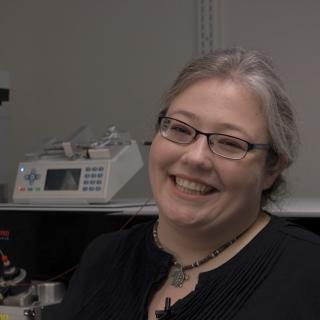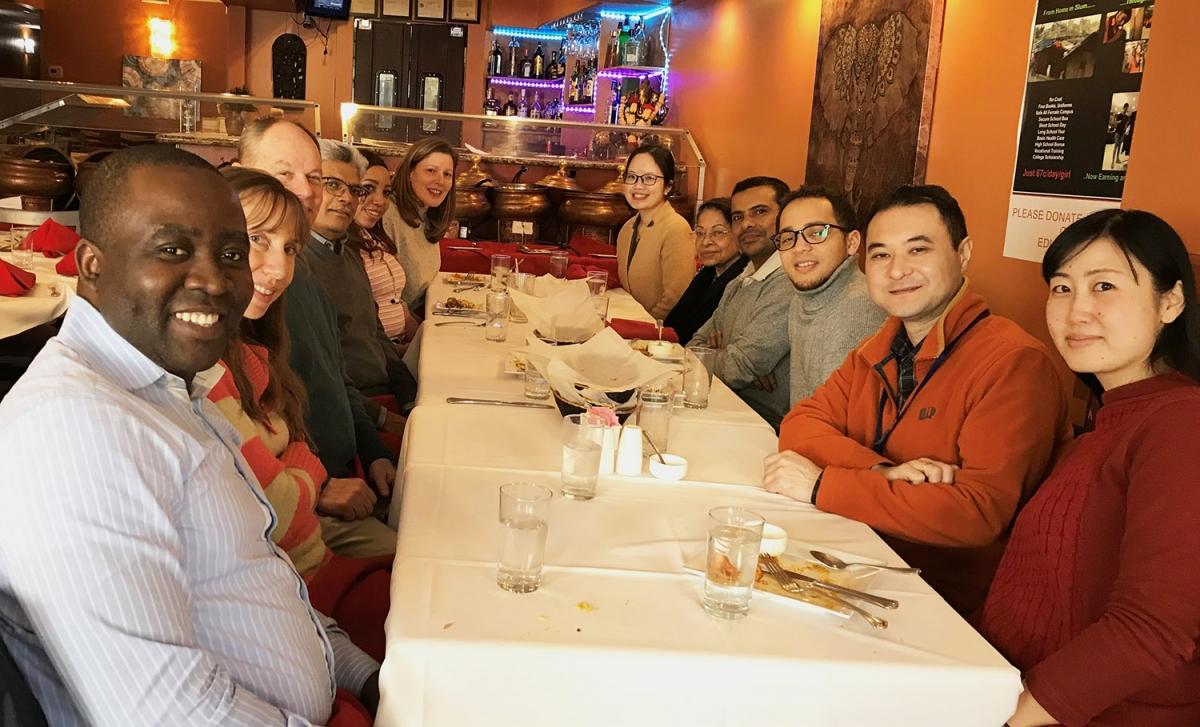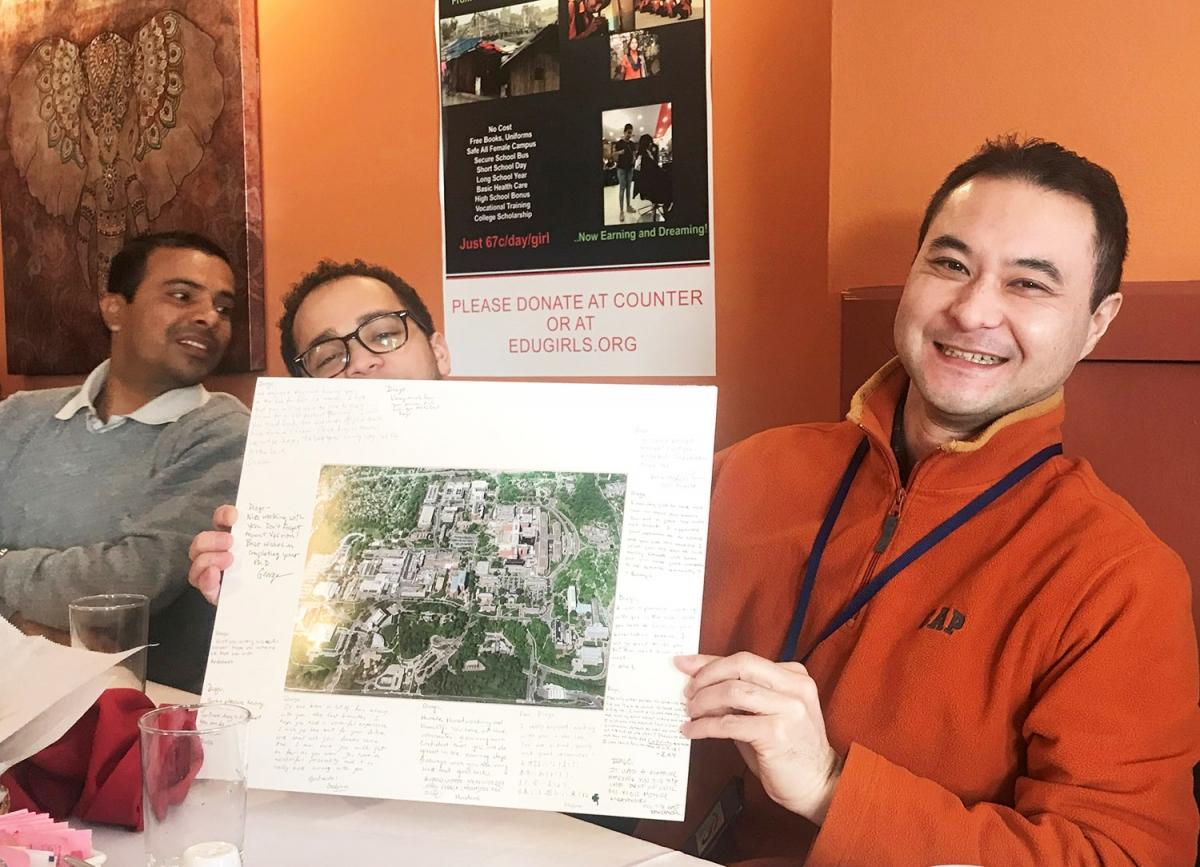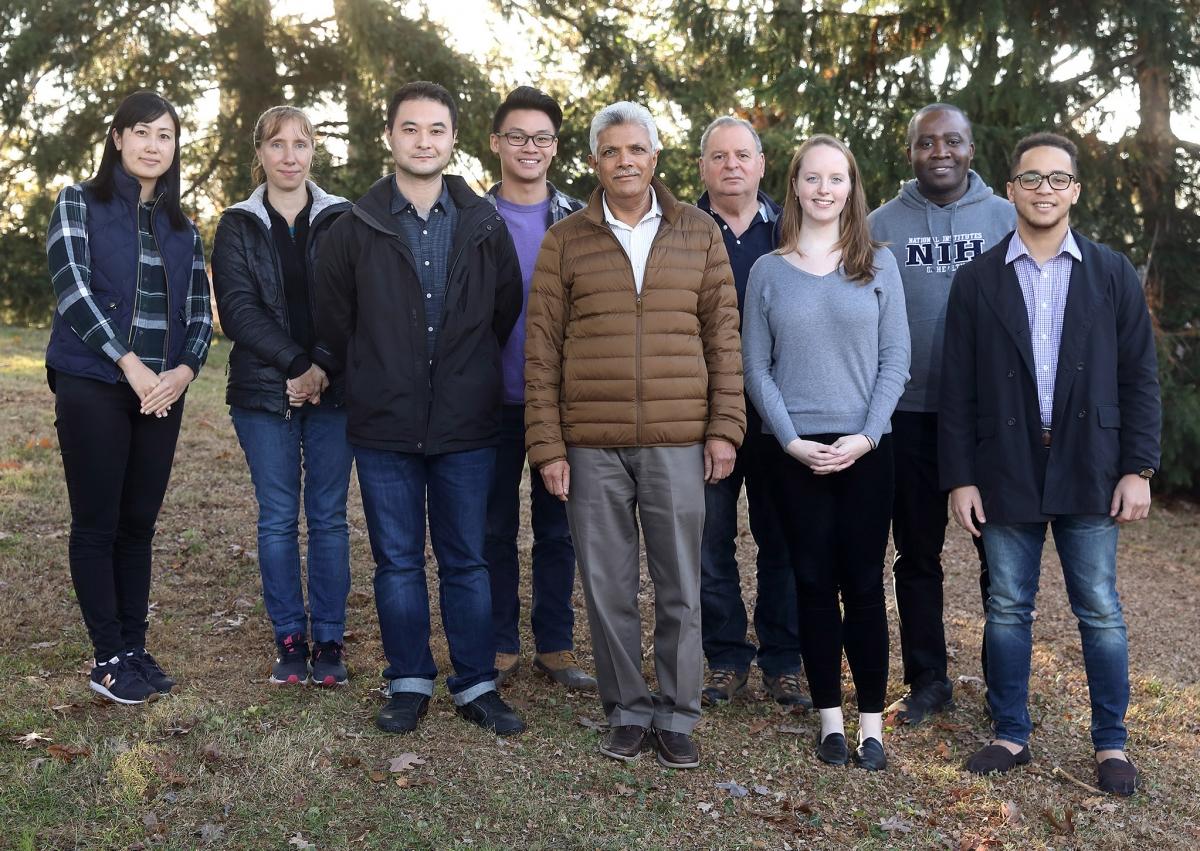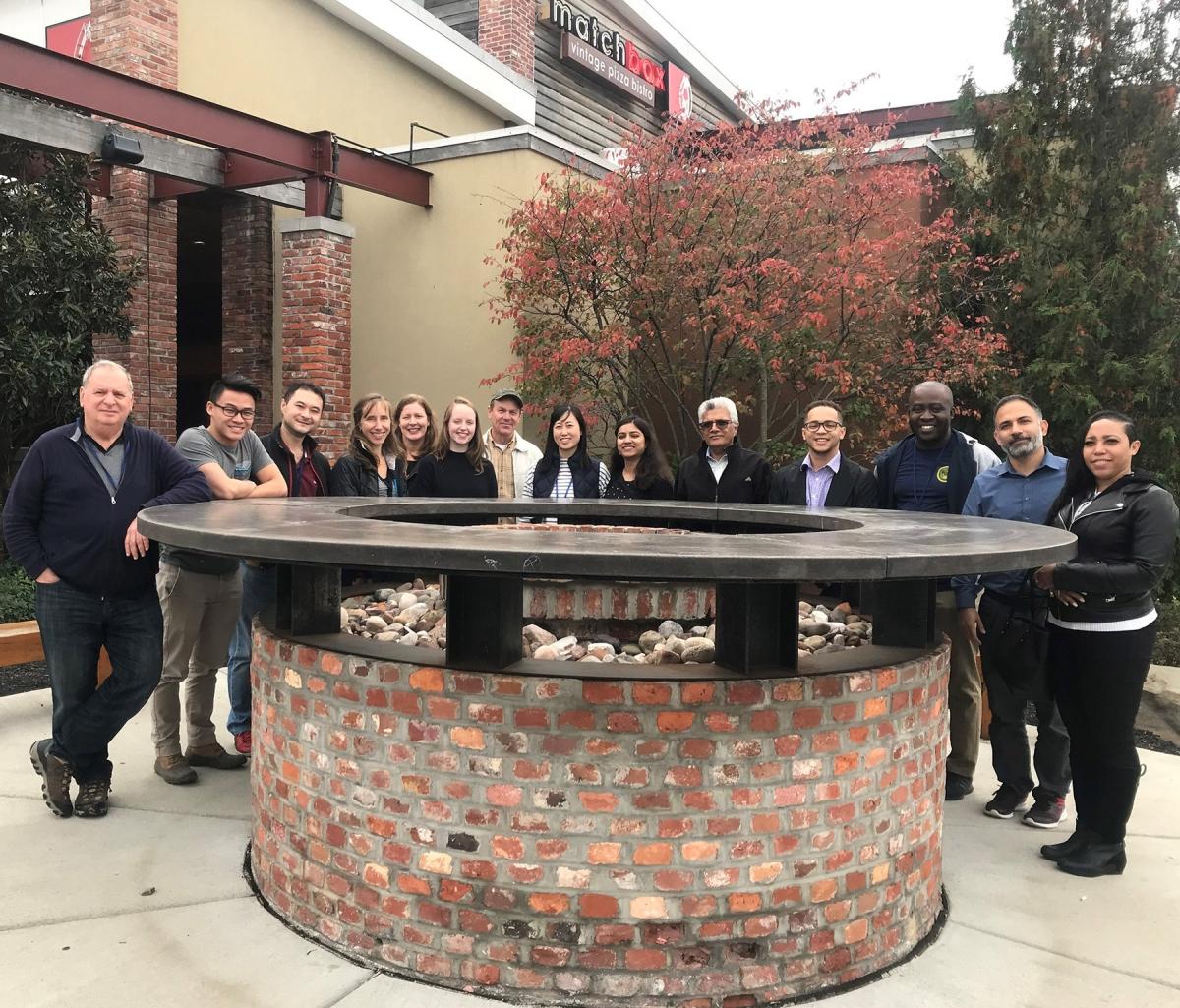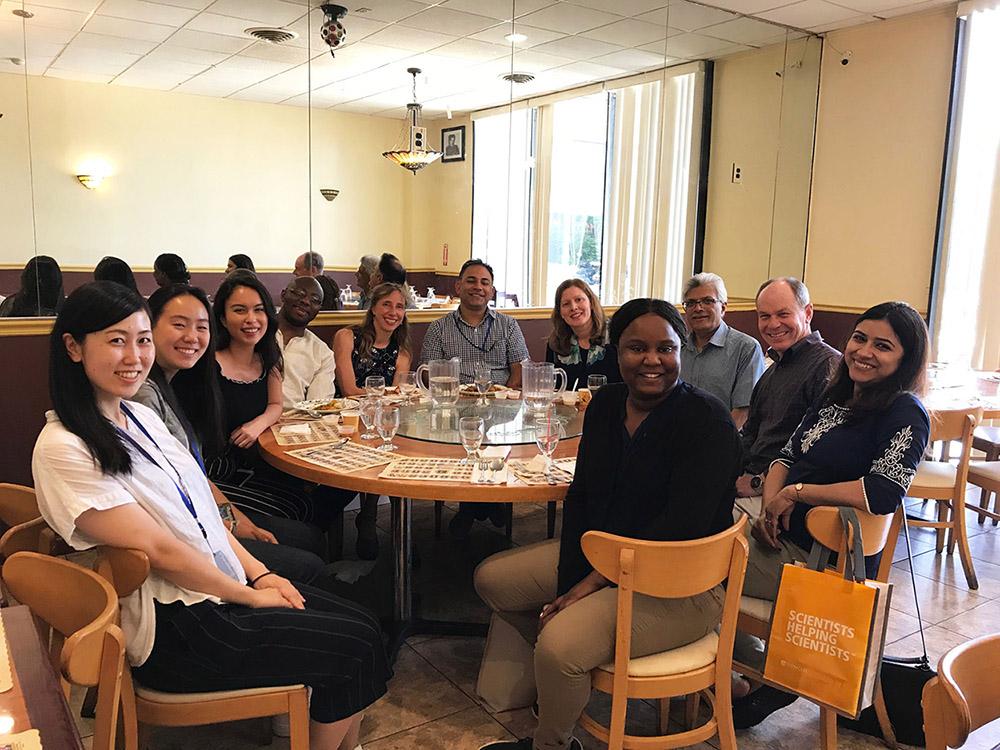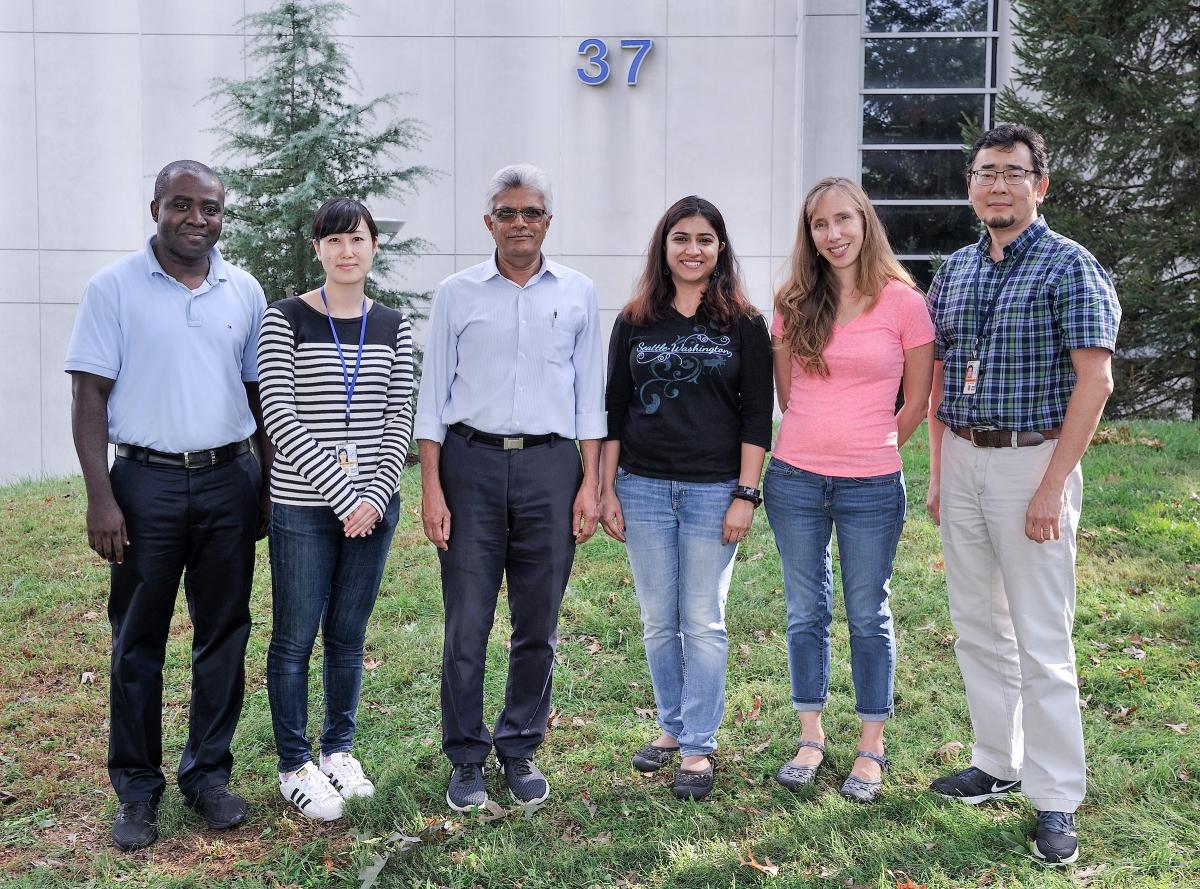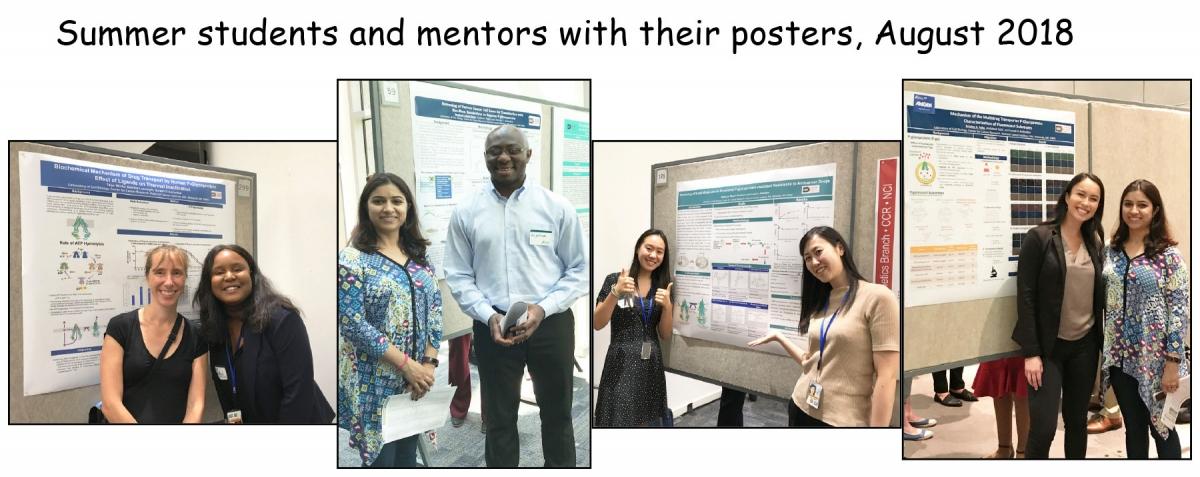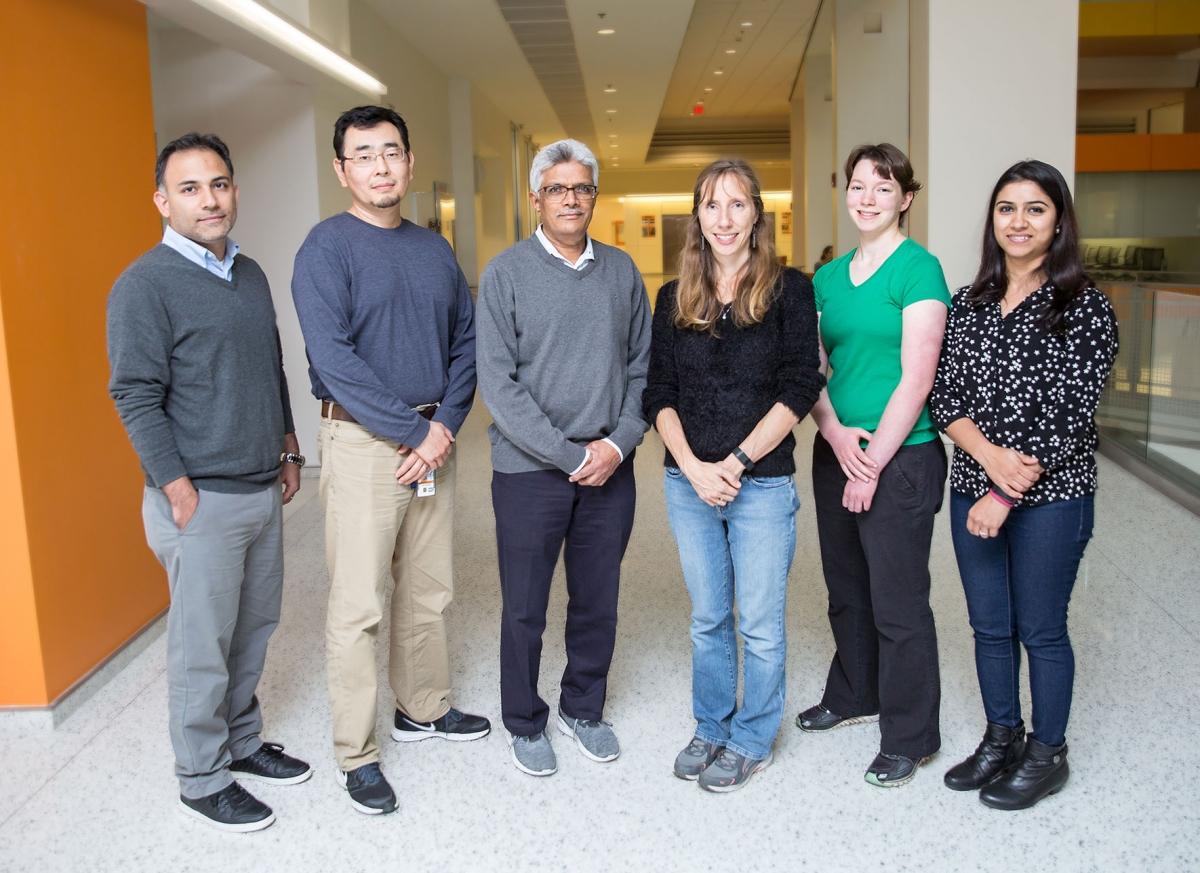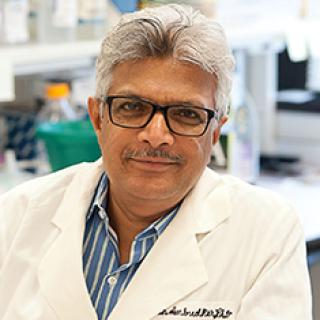
Suresh V. Ambudkar, Ph.D.
- Center for Cancer Research
- National Cancer Institute
- Building 37, Room 2120
- Bethesda, MD 20892-4256
- 240-760-7192
- ambudkar@mail.nih.gov
RESEARCH SUMMARY
Dr. Ambudkar and colleagues elucidate the role of ABC drug transporters in cancers that develop resistance to anti-cancer drugs. They facilitate the development of new therapeutic strategies to improve the efficiency of chemotherapy for cancer patients. Transition metal ion Forster resonance energy transfer, chemical crosslinking, directed mutagenesis, and molecular modeling techniques are used to understand the molecular mechanisms of polyspecificity, the catalytic cycle and drug transport. Monoclonal antibodies and various mutant variants are used to obtain high-resolution structures of P-glycoprotein (ABCB1). They also characterize the modulatory effect of targeted therapeutic tyrosine kinase inhibitors and non-toxic natural products to overcome ABC transporter-mediated drug resistance.
Areas of Expertise

Suresh V. Ambudkar, Ph.D.
Research
Biochemistry of Multidrug Transporters
We have designed a coordinated strategy using multidisciplinary approaches to understand the molecular basis of the polyspecificity exhibited by the ATP-binding cassette (ABC) drug transporter P-glycoprotein (P-gp) and the mechanism of P-gp-mediated drug transport. Our approaches include several biochemical and biophysical assays, cell-based transport assays, purification and reconstitution in lipid nanodiscs for structural studies using cryo-EM, medicinal chemistry to synthesize a large number of compounds to assess structure-activity relationships, in silico molecular modeling and MD simulations to extend our understanding of the mechanistic aspects and structure-function relationships. In addition, we are employing a novel approach of substituting multiple conserved residues with alanine in homologous transmembrane helices (TMHs) to elucidate the transport mechanism of P-gp. Furthermore, we are devoting considerable effort to the screening of repurposed drugs, dual inhibitors, tyrosine kinase inhibitors (TKIs) and small molecule modulators of both P-gp and ABCG2 that are used in the clinic for treatment of various types of cancers.
- Elucidation of the catalytic cycle of ATP hydrolysis and transport pathway of P-gp: We continue to study the catalytic cycle of P-gp, specifically the mechanism of ATP hydrolysis by inhibitors. Cryo-EM analysis of P-gp structures has revealed that two molecules of inhibitors such as zosuquidar, tariquidar, elacridar and encequidar are bound in the transmembrane region. One of the molecules of the inhibitor is bound in the substrate-binding pocket (SBP) and another in a cavity referred to as an "access tunnel" extending from the SBP to the gate formed by TMHs 4 and 10. It was hypothesized that inhibitor occupancy of the access tunnel would impede substrate transport. To test this hypothesis, residues lining the access tunnel that interact with four inhibitors were substituted with alanine to generate mutants named L-site-5A, L-site-8A, and L-site-9A. These mutants, along with the wild-type (WT) P-gp, were expressed in HeLa cells. The mutants showed expression levels similar to those of WT P-gp. In addition, the L-site-5A mutant showed normal transport activity for eight of the ten fluorescent substrates tested and partial transport for two of them, whereas the L-site-8A and L-site- 9A mutants exhibited progressive loss of transport function. When compared to the L-site-5A mutant, L-site-8A and L-site-9A have three or four additional residues substituted with Ala. These residues, or at least some of them, appear to be essential for transport of the tested fluorescent substrates, even though they are located at some distance from the SBP. Surprisingly, all four inhibitors partially inhibited (from 30 to 70%) or completely inhibited (>70%) the drug efflux activity of the L-site mutants, indicating that inhibitors can bind to alternate sites.
- Mechanism of the reversal of the direction of P-gp-mediated drug transport from efflux to uptake: Previously, we generated the 14A mutant of human P-gp in which seven conserved residues each from TMH6 and TMH12 were mutated to alanine and found that this mutant could not efflux most of the substrates tested. But surprisingly, it was able to import four of the tested substrates including Rh123 and Flutax-1. We continue to study the mechanism of how the direction of transport from efflux to uptake is changed. We have focused on these three sub-aims: (a) Determination of the minimum number of mutations in TMHs 6 and 12 necessary for the uptake function: We generated a series of mutants, with the number of mutations ranging from 4 to 16 in TMH6 and TMH12 based on their possible interaction with substrates. We found that a minimum of 7 residues (3 from TMH 6 and 4 from TMH 12, a mutant named 7AII) are required for complete loss of efflux of tested substrates and to gain the ability to mediate uptake of 5 substrates. These findings are consistent with the presence of a switch region comprised of residues present in the upper halves of both TMH6 and TMH12 that determines the direction of substrate transport.
- The molecular basis of the polyspecificity of human P-gp: To understand the molecular basis of the broad substrate specificity of P-gp, we substituted seven residues with Ala in both homologous transmembrane helices (TMHs) 4 and 10, which undergo significant conformational changes during the catalytic cycle of P-gp. We found that the transport function of the mutants containing seven Ala substitutions either in TMH4 or 10 alone is almost the same as that of WT P-gp. However, when the same seven residues are mutated in both TMHs 4 and 10, the TMH4,10-14A mutant lost the ability to transport most tested substrates. These data, consistent with the flexible nature of the TMDs, indicate that multiple mutations in a single TMH are well tolerated. Additional data including molecular dynamics (MD) simulations suggest that residues in TMHs 4 and 10 function cooperatively to generate conformational changes necessary for the translocation of substrate drugs out of cells. Thus, our findings provide a functional correlation with the observed structural changes in TMHs 4 and 10 in the inward-open and -closed states of P-gp.
- Mechanism of photodynamic regulation of P-gp and ABCG2: We have begun to elucidate the molecular mechanism of photodynamic therapy (PDT)-mediated regulation of ABC drug transporters. These studies are carried out in collaboration with Dr. Huang-Chiao Huang through a partnership program between CCR, NCI and the University of Maryland. PDT is a photochemistry-based tool that involves light activation of photosensitizers to generate reactive oxygen species. PDT using the photosensitizer benzoporphyrin (BPD, which is a substrate of P-gp and ABCG2), inhibits both transporters by modulating their ATPase activity and protein integrity. To improve the efficiency of PDT for drug-resistant cancer, we devised a photoimmunoconjugate formulation combining hydrophobic BPD photosensitizers and a conformation-sensitive UIC2 monoclonal antibody to identify P-gp expression on triple negative breast cancer (TNBC) cells. We plan to use Seahorse-based assays to assess the effect of PDT on the energy metabolism and ATP production in P-gp or ABCG2-expressing drug-resistant cancer cells.
- Screening of non-toxic natural products, small molecules, and repurposed drugs as modulators to overcome resistance mediated by P-gp and ABCG2: We continue to characterize natural products, recently developed tyrosine kinase inhibitors, repurposed drugs, and small molecules for their effect on the function of P-gp and ABCG2. These studies are carried out in collaboration with intramural and extramural collaborators.
Publications
- Bibliography Link
- View Dr. Ambudkar's PubMed Summary.
Evidence for a requirement for ATP hydrolysis at two distinct steps during a single turnover of the catalytic cycle of human P-glycoprotein
Elucidation of the structural basis of interaction of the BCR-ABL kinase inhibitor, nilotinib (Tasigna) with the human ABC drug transporter P-glycoprotein
Cryo-EM analysis of conformational landscape of human P-glycoprotein (ABCB1) during its catalytic cycle
Reversing the direction of drug transport mediated by the human multidrug transporter P-glycoprotein
Advances in the structure, mechanism and targeting of chemoresistance-linked ABC transporters
Biography
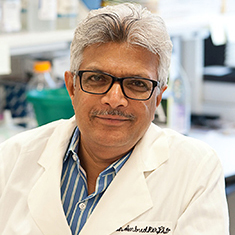
Suresh V. Ambudkar, Ph.D.
Dr. Ambudkar obtained his Ph.D. from Madurai Kamaraj University, Madurai, India, and received his postdoctoral training in membrane bioenergetics at the University of Maryland. He continued his postdoctoral work on biochemistry of membrane transport proteins at the Johns Hopkins University School of Medicine. In July 1995, after 5 years as an assistant professor in the departments of medicine and physiology at Johns Hopkins, he joined the Laboratory of Cell Biology at the CCR, NCI. He serves as Deputy Chief of the Laboratory of Cell Biology and Chief of the Transport Biochemistry Section.
Job Vacancies
We have no open positions in our group at this time, please check back later.
To see all available positions at CCR, take a look at our Careers page. You can also subscribe to receive CCR's latest job and training opportunities in your inbox.
Team
Lab Life
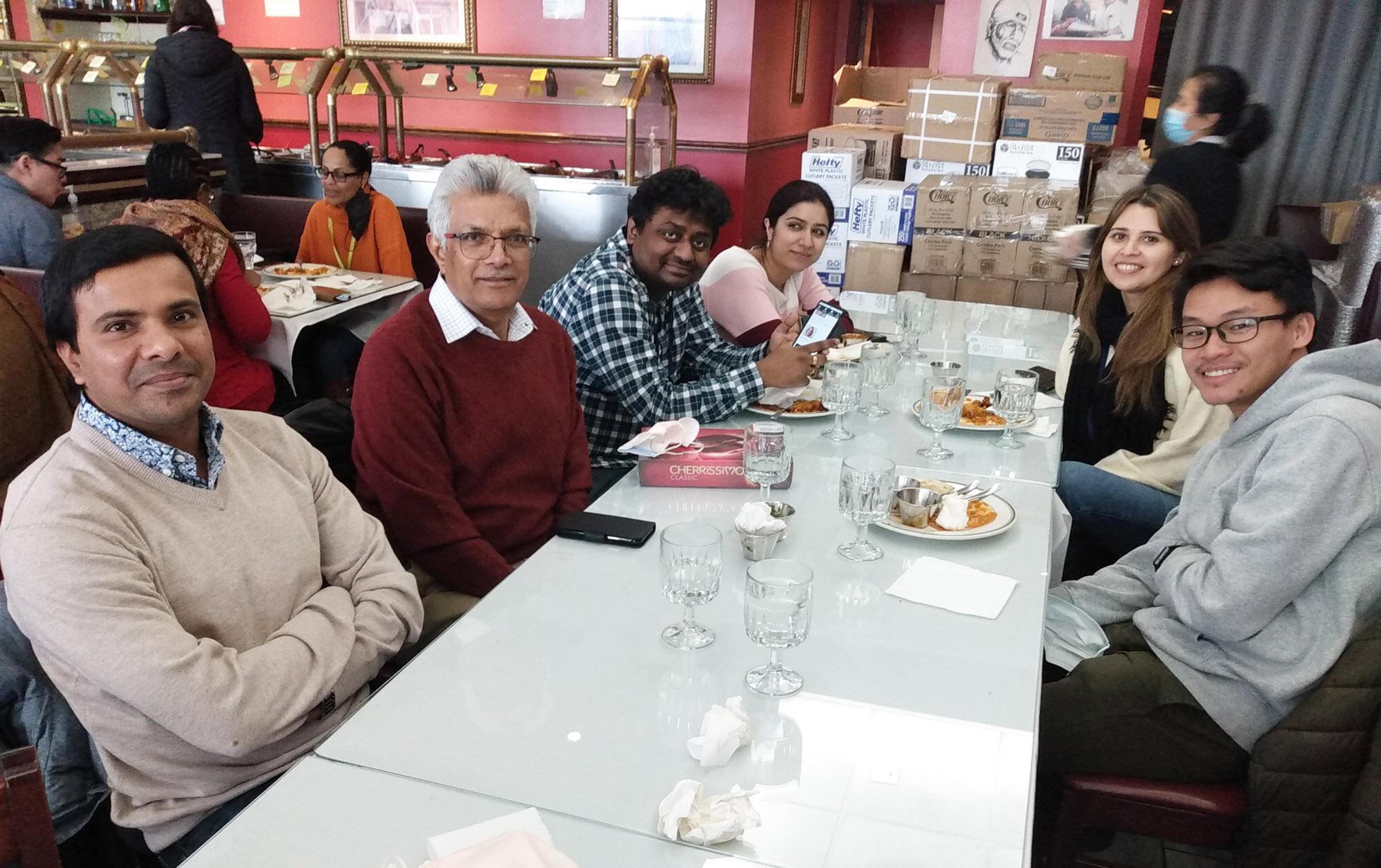
Holiday lunch gathering at MInerva Restaurant, Gaithersburg, December 2021
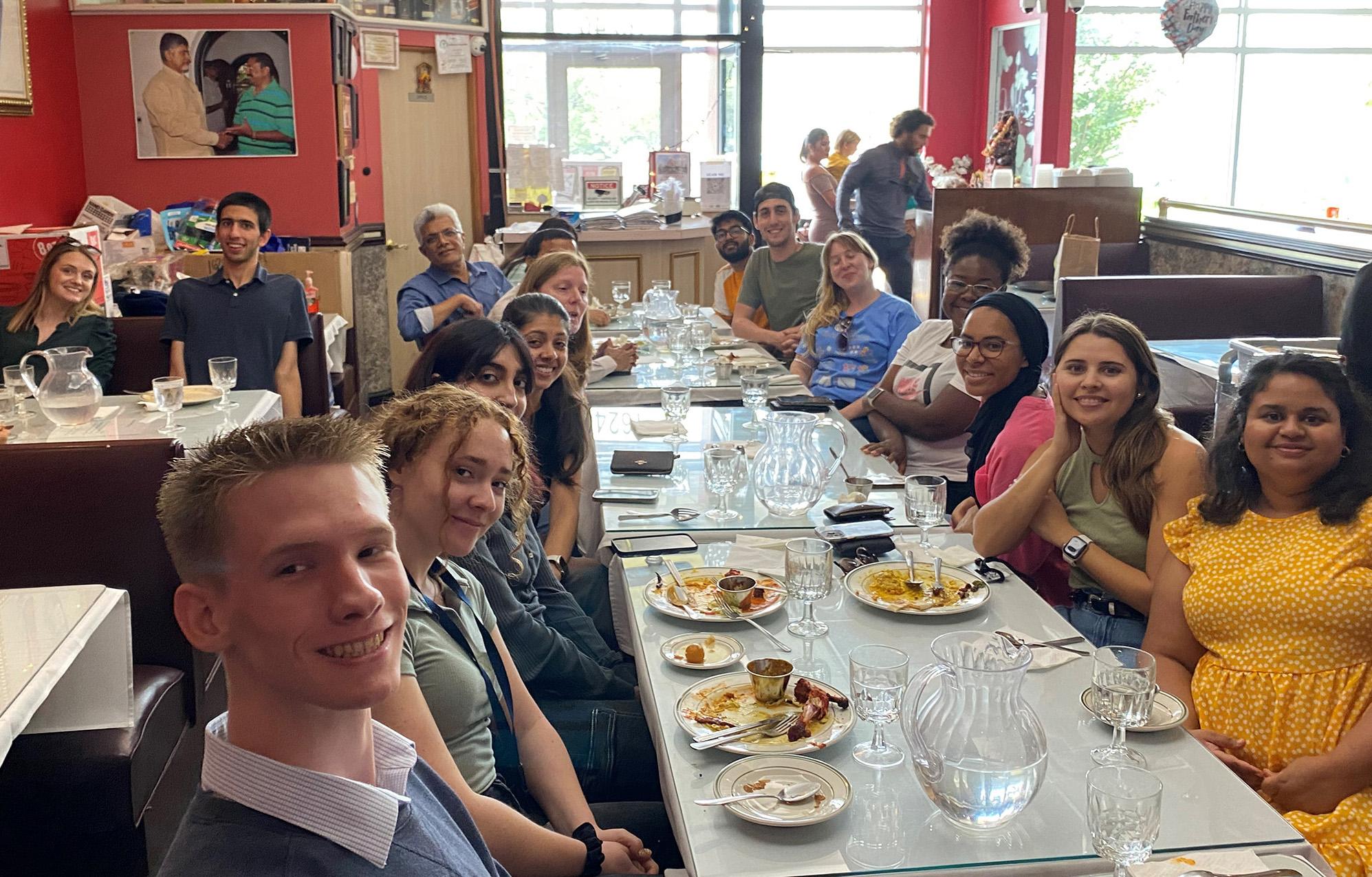
Farewell to Hadiar Rahman, July 2023
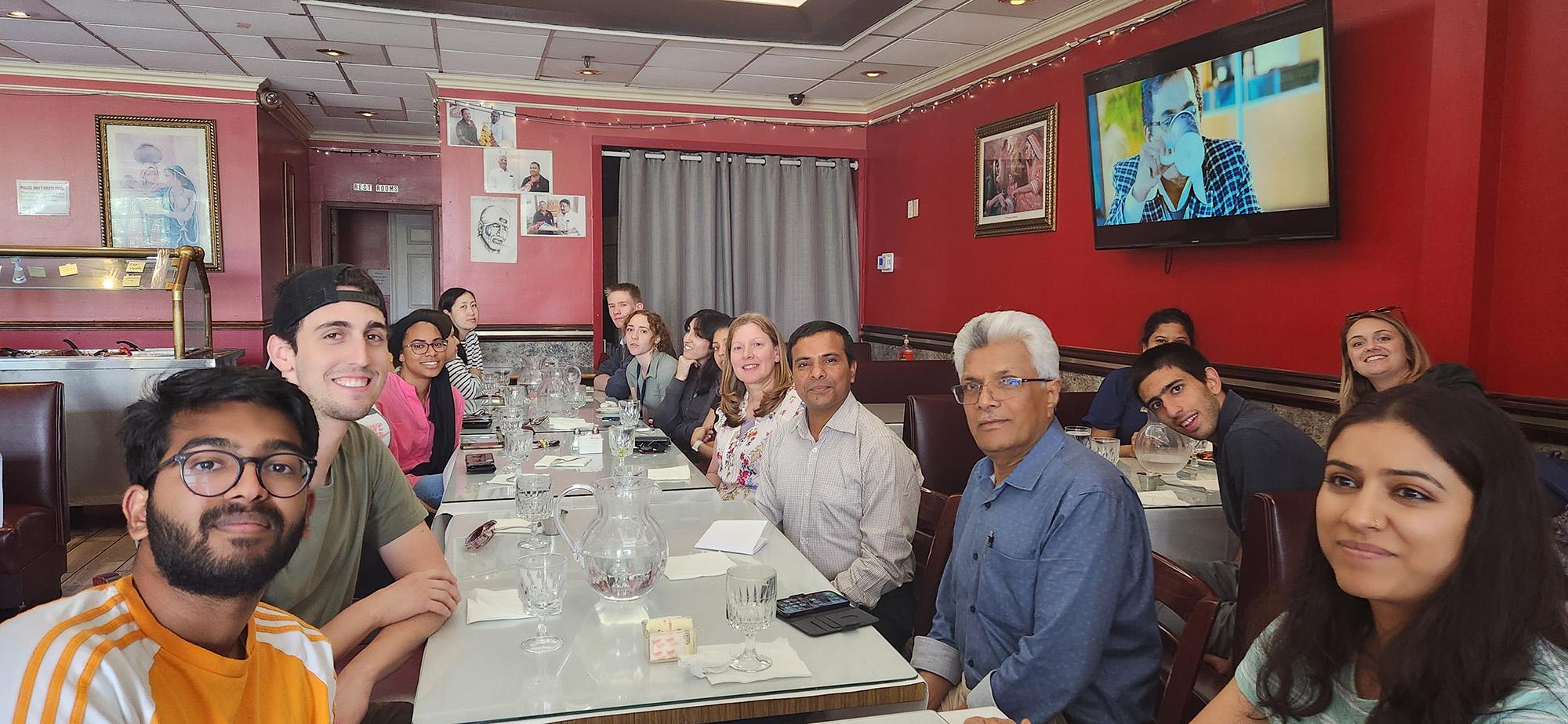
Farewell for Hadiar Rahman, July 2023
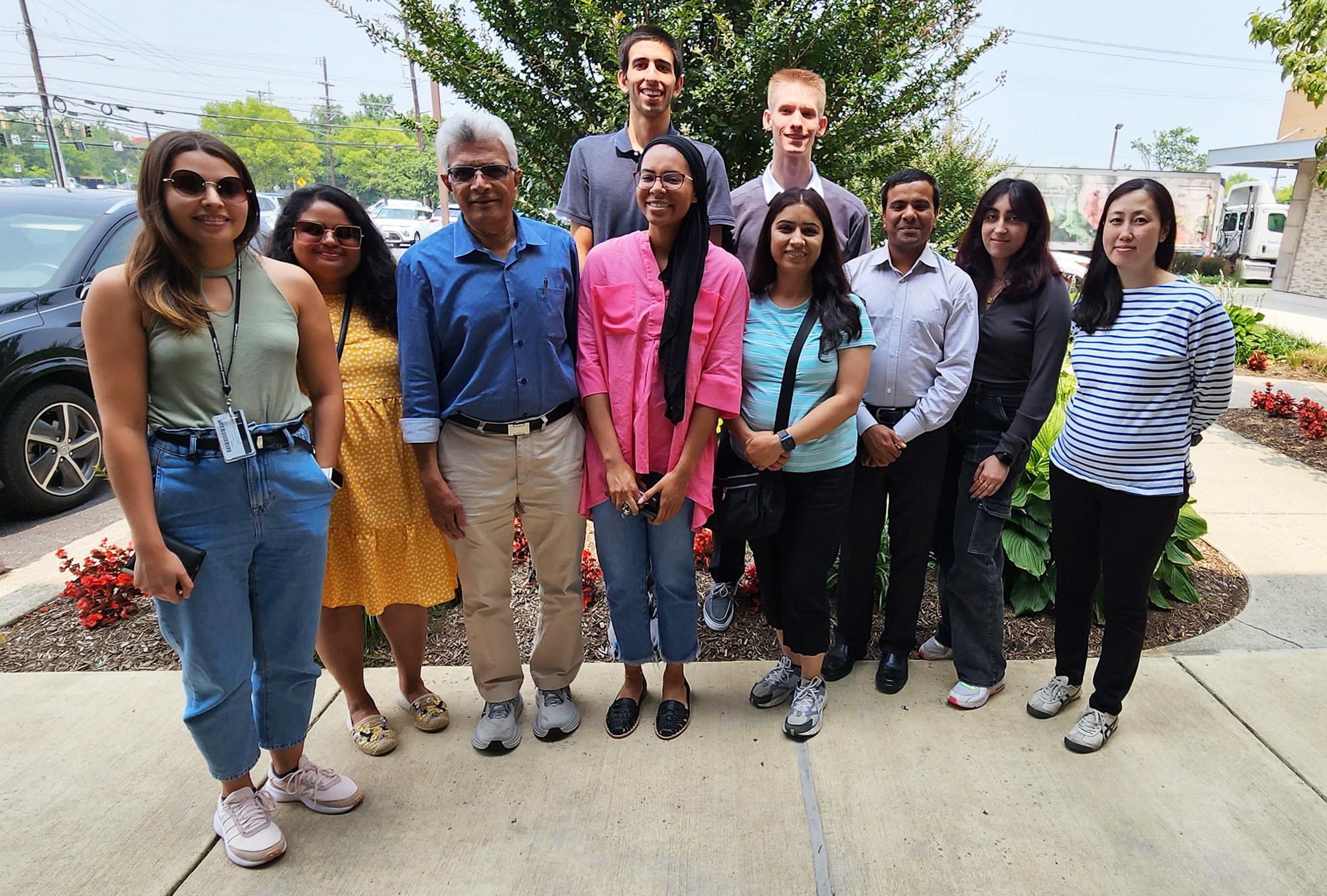
Transport Biochemistry Section, June 2023
Farewell for Biebele Abel, 2020
Farewell to Diogo Kita, 2020
Transport Biochemistry Section, 2019
Farewell lunch for Andaleeb Sajid, 2019
Farewell lunch for Andaleeb
Farewell lunch August 10, 2018
Transport Biochemistry Section, 2018
Transport Biochemistry Section, 2017
News
Learn more about CCR research advances, new discoveries and more
on our news section.

